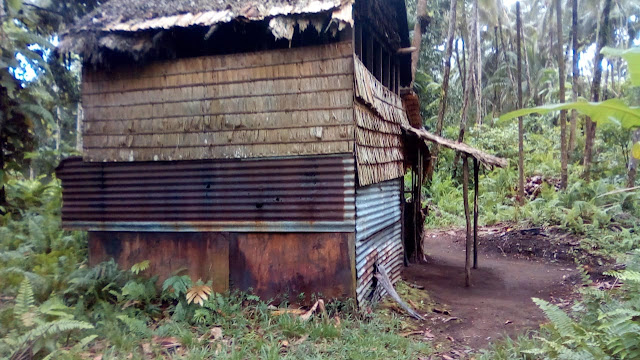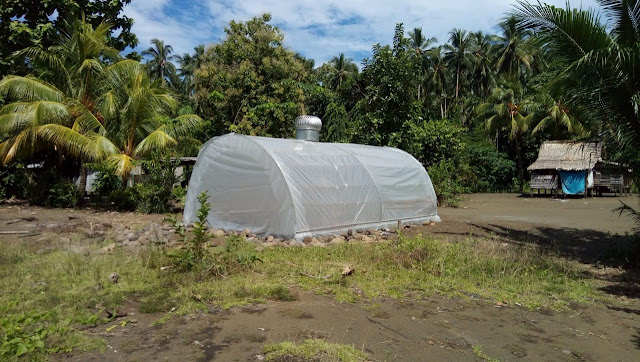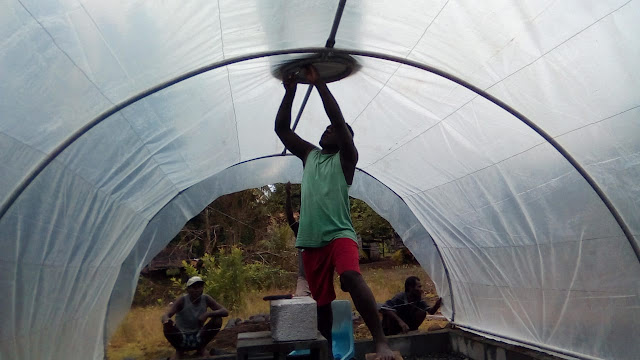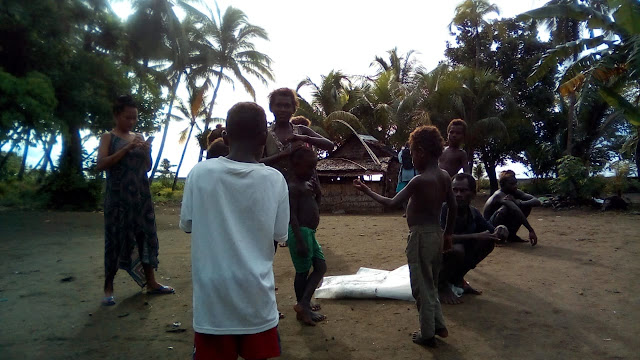 |
| Solar drier hand over to Buni community |

On May 16th,
the iron fabricated solar drier unit was handed over to the community, in
Rendova Islands Hopongo village. This structure has a bed size of 20 feet
length, 12 feet width and 3 feet in height. Approximately 1000 coconut (240 to
320kg of copra) is its capacity. Currently, 27 families (106 family members) are
identified as the beneficiary of the drier unit. On 25th, May team visited and
conducted the training, completed the installation of the Solar Drier and
provided coaching on task & responsibilities to Lead Farmers and
Caretakers. The lead farmers and caretakers will do the monitoring and recording.
For the Solar drier installation,
community commitment was positive from Monday to Friday with men taking the
lead in the construction works, which includes digging, stone collection and
clay soil collection, levelling as part of the foundation work. Bricklaying was
completed, and the solar drier structure was erected with necessary alignments
and measurement followed by the solar-agri plastic covering. While all the
materials needed for the dryer was provided, the installation of the solar
dryer unit was fully done by the community, which gave them a sense of
ownership.
This Solar drier installation will bring a lot of
changes in product quality, workforce and environment compared to previous
activities of using empty nuts, cutting of trees to be burned in the drier. 30%
(15) of the farmers are using hot air' kukum designed drier for drying copra,
and 70% (35) are using smoking.
 | |
|
Drying of copra plays a major role in maintaining the quality
of dried copra. The type of dryer also can affect how much time is required to collect
materials and tend the fire, how much surrounding forest and mangrove
vegetation is needed to burn, and how much burning of copra and smoke that affects
health in copra and in air. Research has shown that smoke drying causes
aflatoxins and polycyclic aromatic hydrocarbon (PAH) in copra and crude coconut
oil (CNO).
Communities that are located near mangrove forests,
the tendency to use mangrove trees as firewood to dry copra is very likely. All
farmers used coconut husks, shells, fronds, and nearby forests to cut trees to
fire up their drier. The reasons provided are mangrove trees are hardwood, and
it burns with more heat and sustains the heat for a longer period before they
can fire up the drier again. Mangroves are a critical part of the local
ecosystem, such as for fish breeding to protect from coastal erosion and
storm/tsunami surge. Around 90-80% of the heat is estimated to come from forest
or mangrove wood, while the remaining 10-20% fuel is predominantly coconut
husks and shells. The smoke is also a Greenhouse Gas (GHG) contributing to
climate change and can cause respiratory sickness for people working and living
in close proximity. Using a solar drier is thus, an excellent confirmation of committed to
sustainable developments, which are beneficial for society, create value and
reduce the environmental impact. This includes above all the fulfilment of the
UN Sustainable Development Goals.
The team provided coaching to the lead farmers,
farmers and caretakers on the procedures and task and responsibilities for
using the solar drier. The team will conduct a comparative study
( Buni and Hoponga village) of the Kukum and Solar drier units (wooden framed
and alumni fabricated units). Below are the pictures
that were taken during the installation and handing over of the solar drier to
the community.














Comments
Post a Comment